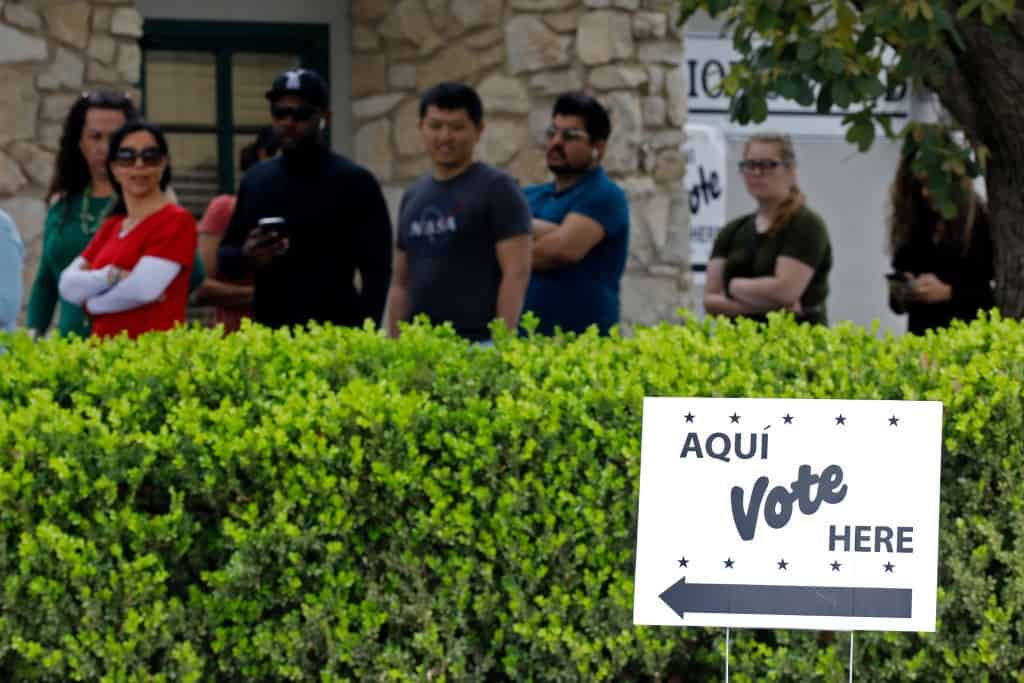So, hey, I called it wrong. In the final weeks of the 2020 election, friends of mine working on races around the country would periodically text me to ask if it was real. Could it be? Are y’all about to flip Texas?
I fielded the same texts in the final days of the 2018 campaign when I was running now-Harris County Judge Lina Hidalgo’s race. Those questions centered not on a moment but a person. Was this Beto guy for real? Was it possible?
I had the same response to all of them in 2018: we’re right there. It’s this close. We can do it.
I had that same feeling this year, watching poll after poll come back with Joe Biden neck and neck with Donald Trump. We were right there. It really was this close.
We were going to do it.
And then on Tuesday, it was close enough to touch it, to hold it in our hands. Joe Biden had commanding leads in the early returns from Texas, he was cleaning up in the major metro areas, on pace to potentially deliver our 38 electoral votes and end the drama on election night.
And then, for what felt like the umpteenth time for Texas Democrats, it slipped through our fingers.
We’re continuing to deconstruct the 2020 cycle and what it means for Texas Democrats, but in the face of losing the presidential race in the Lone Star state, I’ve become disturbed by a narrative that seems to be carving out a foothold in some parts of Texas.
That narrative would convince you that Texas Democrats were too invested in paid communication and not invested enough in the field this cycle. While it is readily apparent that the lack of traditional organizing impeded Democratic campaigns in Texas this cycle, it is a disingenuous argument to suggest that Democrats should be spending less on paid media, and an even more dangerous argument to suggest that we should be investing more in the shrinking rural core of the state at a time when that segment of the electorate is one of the few sources of hope for the future Texas Republicans can cling to.
We need to be very honest with each other as a movement and as Americans about what worked and what didn’t this cycle, and the communities that delivered the presidency to Joe Biden. It was on the strength of Black communities in urban centers like Detroit, Philadelphia, and Atlanta metropolitan areas that provided decisive margins to Biden in those states. It was years of intensive organizing by Black women, Black voters, and Black organizations that yielded tangible dividends and may well have saved our democracy as we know it.
While moderate Republicans were certainly a powerful part of the winning coalition that delivered Arizona to Biden, it was also growing turnout among younger Latinx voters in the state that helped close the gap in the presidential race. Arizona Democrats invested heavily in programs targeting that electorate, and progressive organizations have been registering and activating Latinos as vote-by-mail voters for multiple cycles.
Whether or not that investment was made in Texas remains an open question that is haunting our ongoing research. There were certainly serious dollars spent on television in media markets across Texas, including the crucial DFW and Houston markets that are home to a majority of the Black vote in Texas.
But what were we saying to Black voters in Houston and Dallas? It isn’t enough to simply spend money in Black communities and expect those communities to turn out for us. We need to make sure that our messaging rings true in that community, that our campaigns really are centering the Black women and men that are the backbone of our party.
The same can be said for South Texas. For generations, Democrats haven’t had the resources to go on Spanish language broadcast television in crucial markets. That lack of investment is felt by voters in our border communities, but the impact of television in those markets is almost incalculable because voters are unaccustomed to seeing it. Democratic candidates on Spanish speaking stations asking Latinx Americans for their vote is incredibly powerful communication, and our party needs to make meaningful national investments in paid media for voters of color.
We’ll have more to say on the tactics that did and didn’t work in 2020, as well as a deep dive on digital strategy in Texas over the next few weeks. But any Texas Democrats thinking our path to victory doesn’t still run through Houston, Dallas and other major cities with large communities of color just aren’t looking at the same map and math we are in a cycle where we left nearly a million registered voters on the table in Harris County alone.
Photo: Edward A. Ornelas/Getty Images
Joe brings over a decade of experience as a political operative and creative strategist to Texas Signal, where he serves as our Senior Advisor and does everything from writing a regular column, Musings, to mentoring our staff and freelancers. Joe was campaign manager for Lina Hidalgo's historic 2018 victory for Harris County Judge and is a passionate sneakerhead.





